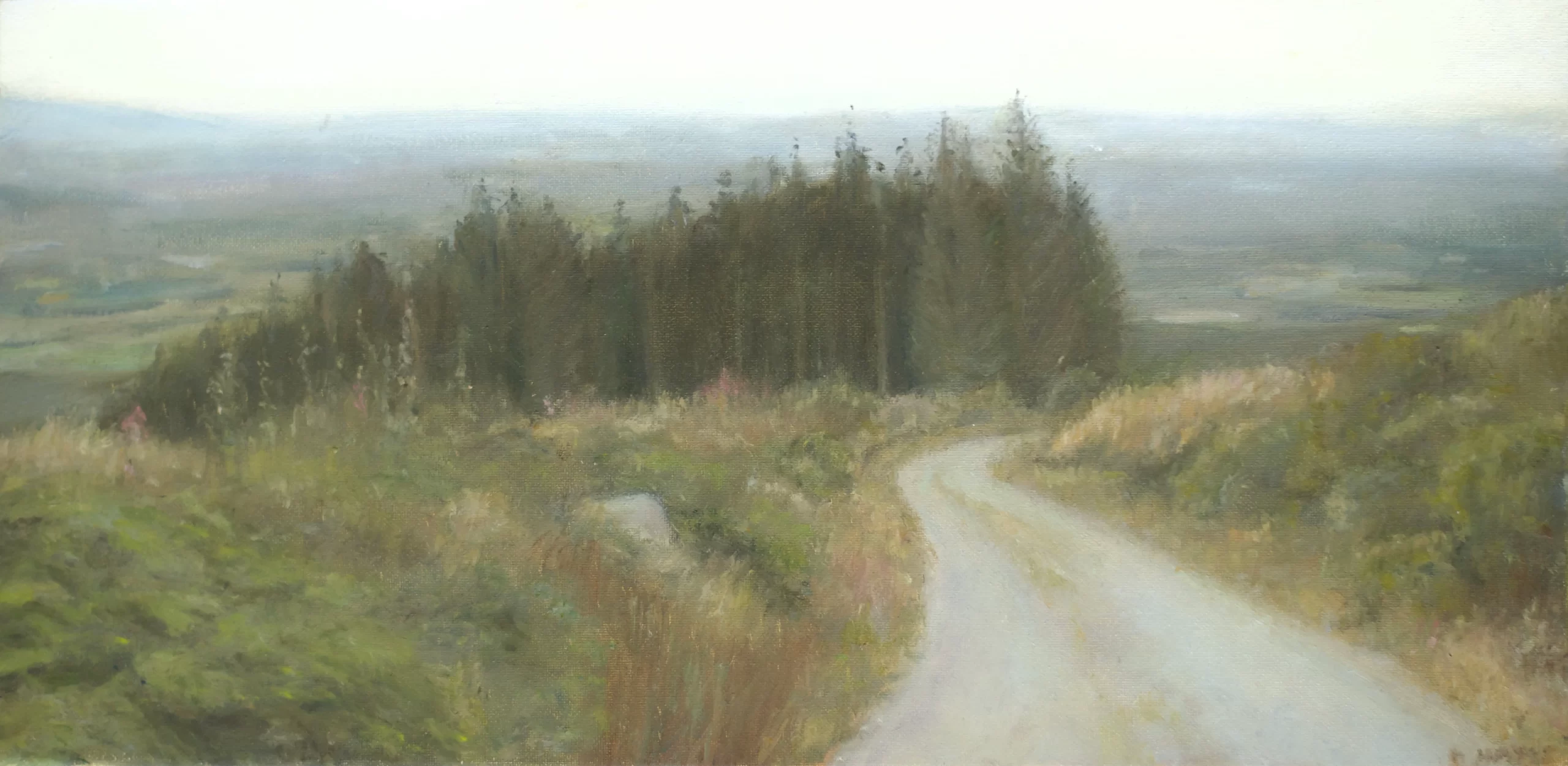Tips for Mastering Atmospheric Perspective in Landscape Painting

How Atmospheric Perspective Enhances the Painting
When I’m painting landscapes, atmospheric perspective is a great tool to help enhance depth and realism:
- Warm Colors in the Foreground: The colors in the foreground are often the most vibrant—yellows, oranges, and rich greens. These warm tones help bring the scene to life and give it a sense of immediacy. Using these saturated hues in the foreground helps anchor the painting, making it feel more alive.
- Fading Colors into the Distance: As objects move further back, their colors naturally cool down and fade. This gradual shift from warm to cool tones helps create depth. The further away things get, the lighter and less saturated the colors become, and the contrast between light and dark becomes less noticeable. Sometimes I like to push this effect even further to create a more dramatic sense of space.
- Sky and Horizon: The sky plays a big part in atmospheric perspective. The upper part of the sky is usually cooler in tone, but closer to the horizon, the sky warms up with pinks, oranges, and yellows. This shift in color not only reflects the scattering of light but also adds to the feeling of light in the scene, especially during sunrise or sunset. These warm tones near the horizon help bridge the land and sky, giving the whole painting a sense of depth and atmosphere.
- Softening Detail and Contrast: Distant objects lose some of their sharpness as they fade into the atmosphere. By softening the details and reducing the contrast between light and dark in the background, you can create a sense of vastness. This mirrors how we perceive distant scenes with our eyes—where the further away things are, the less clear and detailed they appear.
- Creating Scale and Breathing Room: Atmospheric perspective doesn’t just add depth—it also contributes to the sense of scale in a painting. By making distant objects smaller and softer, they add a sense of space and “breathing room” between the foreground and background. This gives the viewer a real sense of how far apart things are, helping to emphasize the size of objects in the foreground and create a more natural, balanced perspective.
Creating Perspective with Scale and Overlap
When painting, one of the most obvious ways to create perspective is by making objects appear smaller as they move further away. Overlapping shapes also helps push the feeling of depth, with objects in the foreground blocking parts of the background. Atmospheric perspective really ties this together, though, by softening the colors and details of distant objects. This effect not only makes things look farther away but also adds that final layer of depth, making the scene feel more immersive and real.
The Effect on the Viewer
Atmospheric perspective really helps bring a painting to life. By using these color shifts and softening details, the scene starts to feel like it extends beyond the canvas. It invites the viewer to feel like they’re stepping into the landscape, exploring its depth and space.